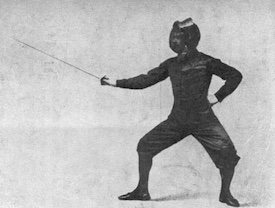analogsurviver
Headphoneus Supremus
- Joined
- Jul 2, 2012
- Posts
- 4,480
- Likes
- 373
Back in the day, the recording labels did compete for the sound quality they managed ultimately to bring to the customer.
With the advent of digital recording - and particularly trough the limitatrions of the early digital, which unfortunately culminated in de facto standard for recording/distributing music - the (in)famous RBCD - sound quality took a big hit and nosedived to almost an afterthought. Things got better only after the sample rate of digital went high enough - around the end of the millenium - but an entire generation, about 20 or so years, has been lost - and the good recording techniques already mastered in the analogue days had to be re-discovered by the new generation of recording engineers.
Here a nice video on the use of the what would be most likely termed as "unnecessary overkill" by the @bigshot & Co - 35 mm magnetic tape that has been used for making vinyl records, and, much later, also made available on CD. But the true sound of these tapes is available either on the original pressing LPs - or HR ( PCM and DSD ) digital downloads that have recently been produced from the 35 mm masters.
Try to listen to at least ONE of these recordings, either on record or HR digital - and you might begin to understand that, although admittedly expensive, "overkill" DOES produce better results. These recordings are now roughly 60 years old - no one ( except in the studio while making them ) back then could reproduce them with anything approaching the quality available today - if not exactly to masses, then to most interested in sound quality enough to dedicate that quest enough money to allow for the equipment that can show these recordings in proper light.
The recording engineers of the past were trying to use the best equipment available, cost be damned - and not use the equipment mostly for the ability to reduce the cost trough clever use of equipment - relegating the sound quality to the back seat .
With the advent of digital recording - and particularly trough the limitatrions of the early digital, which unfortunately culminated in de facto standard for recording/distributing music - the (in)famous RBCD - sound quality took a big hit and nosedived to almost an afterthought. Things got better only after the sample rate of digital went high enough - around the end of the millenium - but an entire generation, about 20 or so years, has been lost - and the good recording techniques already mastered in the analogue days had to be re-discovered by the new generation of recording engineers.
Here a nice video on the use of the what would be most likely termed as "unnecessary overkill" by the @bigshot & Co - 35 mm magnetic tape that has been used for making vinyl records, and, much later, also made available on CD. But the true sound of these tapes is available either on the original pressing LPs - or HR ( PCM and DSD ) digital downloads that have recently been produced from the 35 mm masters.
Try to listen to at least ONE of these recordings, either on record or HR digital - and you might begin to understand that, although admittedly expensive, "overkill" DOES produce better results. These recordings are now roughly 60 years old - no one ( except in the studio while making them ) back then could reproduce them with anything approaching the quality available today - if not exactly to masses, then to most interested in sound quality enough to dedicate that quest enough money to allow for the equipment that can show these recordings in proper light.
The recording engineers of the past were trying to use the best equipment available, cost be damned - and not use the equipment mostly for the ability to reduce the cost trough clever use of equipment - relegating the sound quality to the back seat .





















